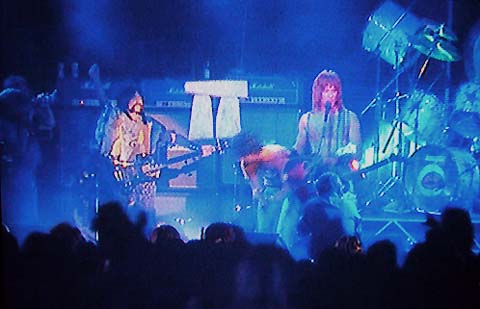Parts are on the way and I made headway on the electrical today. And we're setting up a new phone right now so that I may take pictures once again and finally make a video for a fellow MCI owner that contacted me through PBB.
I bounced all over Colorado Springs yesterday in search of more 1" liquid-tight, insulated throat, metallic flex conduit connectors and came up empty handed. We ordered two boxes of them last night. We also ordered one Blue Sea 1991 bus bar and one Blue Sea 3113 marine breaker enclosure. The connectors will finish up the conduit and allow me to move on to the PVC conduits and then the floor sheeting.
I spoke with Todd at Midnite Solar about remote shutoff breakers. We will be using their MNEDC250RT for each inverter and their MDC-GFP80 for each PV input to the charge controllers. Not that remote shutdown is necessary, but we've had so many people watching our build closely that are interested in the electrical setup. NEC requires home installations to have a remote shutdown for firefighters and other emergency personnel in the event that the home's system needs to be shut down without having to enter the building. Since we're setting an example for some, I want to try this out.
I'm not entirely familiar with RV's. What I have seen tells me that breaker panels and shutoff switches aren't readily accessible in an emergency. Word had it the RV electrical fires are all too common. Our bus has to flip-up panels on the outside that are no longer occupied. Great locations for an "e-stop" type button. The remote trip breakers only need a quick shot of a power source to trip them and everything shuts down together.
We are using the Midnite Solar Kid controllers which automatically open up the PV circuit if their connection to the batteries is lost. I'll still put in the GFP disconnects because some charge controllers don't have the same feature. With the inverter breakers going in the upper rear center of the rearmost storage bay and all our "upstairs" breakers going towards the back of the bus, the run between the two locations for emergency shutdown might be exhausting.
I also spoke with a gentleman at Brallie Battery to get the rundown on swapping the starting batteries to lithium. Granted the swap is overpriced in the eyes of many, the cost is the only bummer. $2K for a pair. The upsides are a full volt high and a little more cranking amp at only 11.5 pounds each. Our current lead acid pair likes to burp acid on you any time you move them and they weigh 140ish pounds each. They're part culprit of my herniated disc last week.
Running these Braille lithiums is really easy. Our voltage regulator is external and adjustable which allows me to bump it up from the 27.5 that it's set at to the 28-29 volts that the lithium batteries need. Nothing else is required. Since they will be used for starting almost exclusively, we're going with the i34RX.


